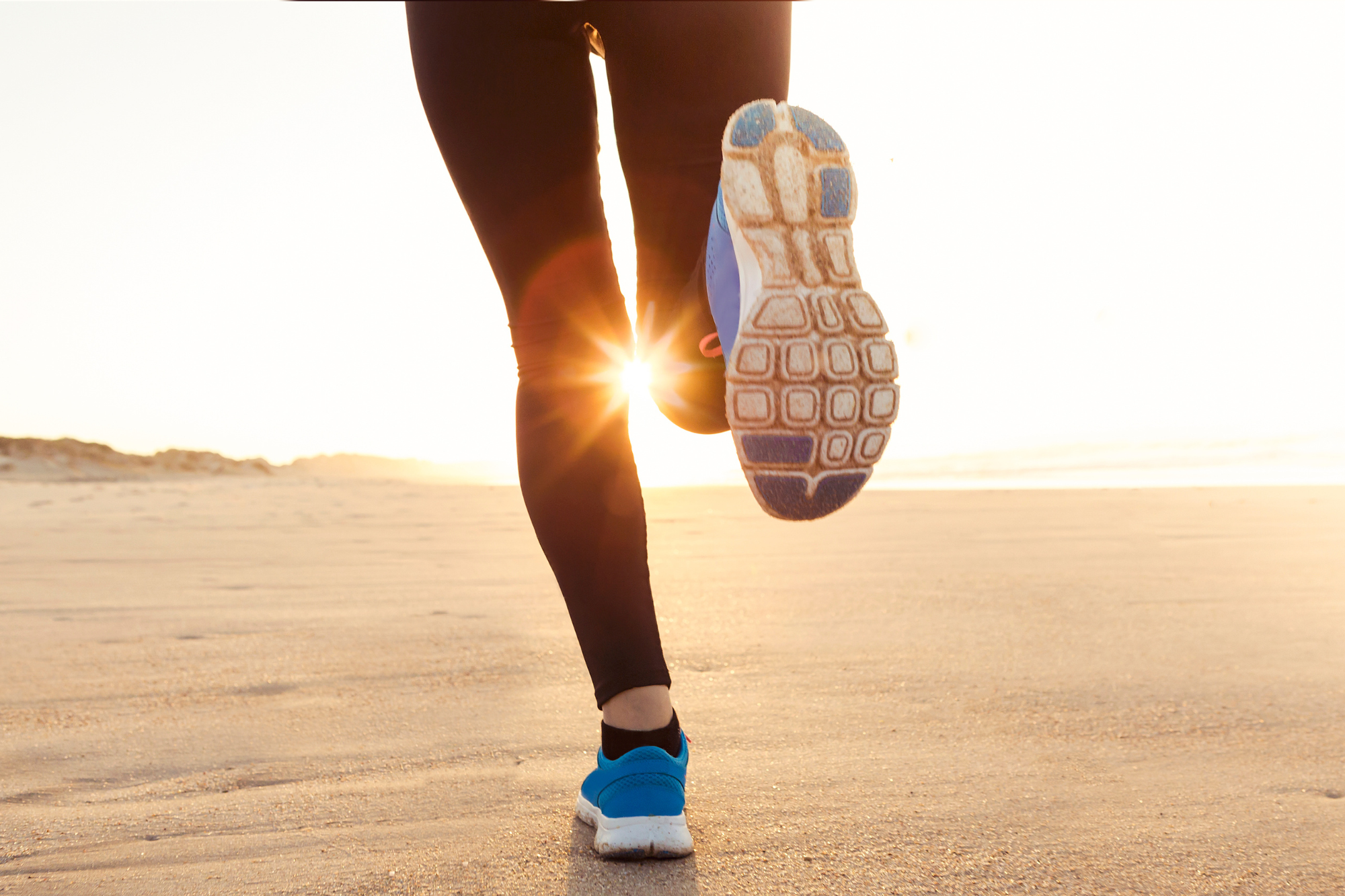Blog, Physiotherapy
Understanding Common Running Injuries: Causes, Symptoms, and Treatment
 As passionate runners lace up their shoes and hit the pavement or trail, the exhilaration of the run often outweighs the potential risks of injury. However, understanding and recognising common running injuries is essential for maintaining a healthy and injury-free running routine. In this comprehensive guide, our Sydney MPhysio Clinic physiotherapist, Marinus Du Preez, explore several prevalent running injuries, including runner’s knee, shin splints, Achilles tendonitis, and plantar fasciitis. From identifying the causes and symptoms to discussing appropriate treatment options, he will provide valuable insights to help you stay on track and address any injuries that may arise.
As passionate runners lace up their shoes and hit the pavement or trail, the exhilaration of the run often outweighs the potential risks of injury. However, understanding and recognising common running injuries is essential for maintaining a healthy and injury-free running routine. In this comprehensive guide, our Sydney MPhysio Clinic physiotherapist, Marinus Du Preez, explore several prevalent running injuries, including runner’s knee, shin splints, Achilles tendonitis, and plantar fasciitis. From identifying the causes and symptoms to discussing appropriate treatment options, he will provide valuable insights to help you stay on track and address any injuries that may arise.
-
Runner’s Knee (Patellofemoral Pain Syndrome):
Causes:
Overuse: Excessive running, especially on hard surfaces or uneven terrain, can lead to irritation and inflammation of the patella (kneecap) and surrounding tissues.
Poor Biomechanics: Issues such as overpronation, weak hip muscles, or improper running form can contribute to runner’s knee.
Muscle Imbalances: Weakness or tightness in the quadriceps, hamstrings, or hip muscles can alter knee alignment and increase stress on the patellofemoral joint.
Symptoms:
Diffuse pain around or behind the kneecap, particularly during activities like running, squatting, or climbing stairs.
Swelling or tenderness around the knee.
Treatment:
Rest: Reduce or modify your running activity to allow the knee to rest and heal.
Ice: Apply ice packs to the affected area to reduce inflammation and alleviate pain.
Strengthening Exercises: Focus on exercises to strengthen the quadriceps, hamstrings, and hip muscles to improve knee stability and alignment.
Patellar Taping or Bracing: Utilise supportive taping or bracing techniques to alleviate pressure on the knee joint during activity.
-
Shin Splints (Medial Tibial Stress Syndrome):
Causes:
Overpronation: Excessive inward rolling of the foot can place increased stress on the shin bones and surrounding muscles.
Sudden Increase in Training Intensity: Rapidly increasing mileage or intensity without proper conditioning can lead to shin splints.
Running on Hard Surfaces: Repeated impact on hard surfaces can contribute to inflammation and micro-tears in the muscles and connective tissues of the shin.
Symptoms:
Pain along the inner edge of the shinbone (tibia), typically occurring during or after running.
Tenderness or soreness to the touch along the shinbone.
Swelling or redness in the affected area.
Treatment:
Rest and Ice: Reduce or modify running activity and apply ice packs to the affected area to reduce inflammation and pain.
Proper Footwear: Ensure you’re wearing supportive running shoes that provide adequate cushioning and stability.
Gradual Return to Activity: Gradually reintroduce running once symptoms subside, starting with low-impact activities like swimming or cycling.
Strengthening and Stretching Exercises: Incorporate exercises to strengthen the calf muscles and improve flexibility in the ankles and lower legs.
-
Achilles Tendinopathy
Causes:
Overuse: Repetitive stress on the Achilles tendon, particularly from activities like running or jumping, can lead to inflammation and tendon damage.
Tight Calf Muscles: Limited flexibility in the calf muscles can increase strain on the Achilles tendon during movement.
Sudden Changes in Training: Rapidly increasing mileage, intensity, or hill running without proper conditioning can contribute to Achilles tendonitis.
Symptoms:
Pain and stiffness in the Achilles tendon, particularly during activity or upon waking in the morning.
Swelling or thickening of the tendon.
Difficulty with activities like walking or climbing stairs.
Treatment:
Rest and Ice: Limit weight-bearing activities and apply ice packs to the affected area to reduce pain and inflammation.
Progressive overload: Isometric -> Isotonic -> Eccentric -> Plyometric. Perform calf exercises to strengthen the Achilles tendon and improve its ability to absorb force.
Stretching: Incorporate stretching exercises to improve flexibility in the calf muscles and reduce tension on the Achilles tendon.
Orthotic Inserts: Consider using orthotic inserts or heel lifts to provide additional support and reduce stress on the Achilles tendon.
-
Plantar Fasciitis:
Causes:
Overpronation: Excessive inward rolling of the foot can strain the plantar fascia, a thick band of tissue that runs along the bottom of the foot.
Tight Calf Muscles: Limited flexibility in the calf muscles can contribute to increased tension on the plantar fascia.
Improper Footwear: Wearing shoes with inadequate support or cushioning can exacerbate plantar fasciitis.
Symptoms:
Sharp pain or stiffness in the heel or arch of the foot, particularly upon waking or after prolonged periods of rest.
Pain that worsens with activity, especially running or walking.
Tenderness or inflammation along the bottom of the foot.
Treatment:
Rest and Ice: Limit weight-bearing activities and apply ice packs to the affected area to reduce pain and inflammation.
Progressive overload: Isometric -> Isotonic -> Eccentric -> Plyometric. Perform calf exercises to strengthen the Achilles tendon and improve its ability to absorb force.
Stretching: Perform stretching exercises to stretch the calf muscles and plantar fascia, helping to alleviate tension and promote healing.
Orthotic Inserts: Use supportive orthotic inserts or arch supports to provide additional cushioning and reduce stress on the plantar fascia.
Night Splints: Consider wearing night splints to maintain a gentle stretch on the plantar fascia while sleeping, which can help reduce morning pain and stiffness.
While running injuries can be frustrating and disruptive, they are often manageable with proper care and attention. By understanding the causes, symptoms, and treatment options for common running injuries like runner’s knee, shin splints, Achilles tendinopathy, and plantar fasciitis, you can take proactive steps to address any issues that arise and keep doing what you love. Remember, if you experience persistent or severe pain, it’s essential to seek professional help from a physiotherapist or healthcare provider for diagnosis and management tailored to your specific needs.
For personalised guidance and support in managing running injuries, contact Marinus at M Physio today to schedule a consultation with one of our experienced physiotherapists. We’re here to help you stay injury-free and reach your running goals with confidence.
 |
Written By:
Marinus Du Preez (Principal Physiotherapist) Bachelor of Health Science (Physiotherapy) |


